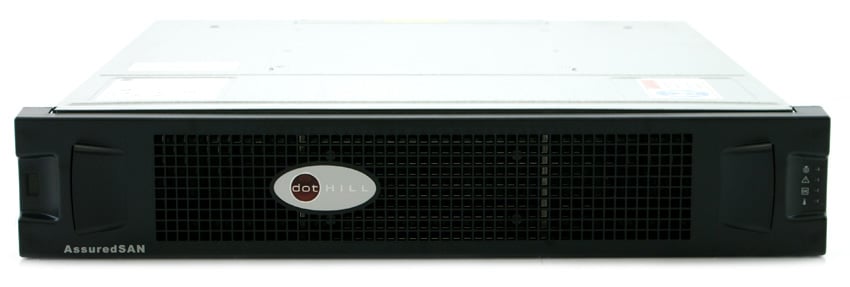Seagate’s stock is getting hammered after the company sent out an update earlier this week indicating the company would miss its prior quarterly guidance. Seagate files its financials at the end of this month; generally companies issue bad news like this ahead of time to soften the downward surprise when there’s a material miss like this. While one quarter doesn’t make a company, Seagate’s momentum can at least partially be traced to their lack of investment in flash.
Seagate’s stock is getting hammered after the company sent out an update earlier this week indicating the company would miss its prior quarterly guidance. Seagate files its financials at the end of this month; generally companies issue bad news like this ahead of time to soften the downward surprise when there’s a material miss like this. While one quarter doesn’t make a company, Seagate’s momentum can at least partially be traced to their lack of investment in flash.
About two years ago I wrote an article about how WD and Seagate specifically needed to make a serious play in flash. We made a few suppositions back then that supported the idea:
- Within the next 3-4 years mainstream enterprise flash might be priced at or below $0.50/GB
- The HDD market will be shipping over 10TB per drive
- One SSD vendor sees a 16TB drive possible in 2016
- HDD vendors simply just can't rely on the existing NAND vendors to supply them long term
More or less, these things have all come to pass. SATA SSDs are penetrating some spots in the enterprise and can be had for less than $0.50/GB. 10TB HDDs are not only out and shipping, but 12TB is near as well. Samsung didn’t quite hit 16TB, but they’re shipping a 15.36TB SSD; according to them. Perhaps the most important point is the last one though. Seagate tied up with Micron to release a single SAS SSD and WD is under contract to buy SanDisk and already had HGST, amongst other flash investments.
SanDisk gets WD immediately in the NAND business and helps to address the product portfolio problem Seagate has. In the enterprise, the HGST arm of WD has been ready for the transition off 2.5” HDDs for some time, while leading the industry in high-capacity HDDs for the last two years. When some portion of the enterprise drive sales sags for HGST, they are able to recapture some of those losses back on the flash side of the house. WD reported $270 million in enterprise flash sales in the last quarter (Q2FY16), which puts them over a billion dollar annual run rate. In that quarter enterprise flash made up 8.14% of the company's revenue. That compares to 4.8% in the same quarter last year and 3.9% in the same quarter in 2014. While the calendars don’t align exactly, SanDisk reported revenues in their last quarter of $1.54 billion (client and enterprise). Using loose math, that puts the combined WD flash properties at an annual run rate of over $7 billion, assuming the deal goes through.
Seagate doesn’t report enterprise flash sales as a line item in their quarterly reports the way WD does. They instead put it in a group called “Enterprise Systems, Flash, and Other.” This group did $259 million in revenue the last quarter. While it’s hard to divine the flash makeup, it would be hard to expect flash sales to be the bulk of that line item, given the relatively limited portfolio.
This said, it’s not all doom and gloom for Seagate. Micron has shown a propensity to partner whenever they can, so it’s reasonable to expect Seagate and Micron to continue to hold hands on SAS-based SSDs. It’s also reasonable to posit that Seagate buys Micron to gain access to NAND and emerging technologies (XPoint) and flash-based solutions. Incidentally, the inverse make little sense, Micron doesn’t need the debt and physical infrastructure Seagate has. Seagate could also make a play with Hynix theoretically.
Ultimately Seagate has to do something new as today it’s more obvious than ever that in the enterprise the top tiers of workloads are going to flash and there’s little room for HDDs in the performance tier. Seagate has compelling solutions in a lot of places; NAS drives, high capacity archive solutions and even primary storage with the Dot Hill acquisition, are all good strengths. Heck, even their 10K/15K 2.5" HDDs are great, the market is simply shrinking. Flash is ultimately going to be key though, for client systems through the enterprise, and Seagate must adjust so they’re able to offer a complete portfolio for all types of workloads.
Sign up for the StorageReview newsletter

